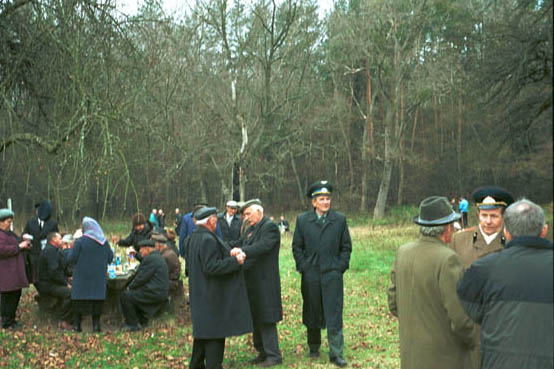|
Battle for
liberation of Kiev.
A photo showing veterans celebrating town liberation day.
Each year fewer are alive to attend these picnics. Soon none
will be left who can tell, in their own words, the truth of war.
They alone remember how war was fought before the atom, before
terrorism, before mercenaries.
They are simple, brave soldiers who did their jobs every day,
for four long years, without any pay.

The major crossing over Dnepr began on November 4th, 1943.
The name Luteg beachhead comes from name of a village where
Soviet Army first broke through German defence. Battle spread on
area of 70 kms along the bank of river North from Kiev. Troops
start coming from everywhere.
In Bukrin they left dummies of planes, tanks and cannons and in
one night secretly re-deployed army. There were partisans from
Belorusia, there were troops and people from all part of Russia
and central Asia, Ukrainian civilians from the left bank of the
Dnepr river or just anyone who could hold weapon and whom Red
Army picked on their way. Luteg beachhead was a scene that town
haven't seen since Mongols invaded it, thousands of people were
crossing river on boats, horses and bags of straw. People were
coming and coming and soon Germans, no longer able to hold this
avalanche, stood back. Photo from diorama in museum. It was one
heavy battle. Only river know how many died, water in river was
red with blood.

We lost this battlefield, after war they built a
hydroelectric power station and all area of a beachhead went
under water. Only top sides of bunkers stand out, they are
bunkers of fortified area.
Stalin desperately wanted Kiev to be liberated by November 7
and it was destined to happen. On November 6, (1943) Germans
left Kiev. The commander of German army group "South" - Eric
Manstein- had a broader agenda other than to merely ruin Stalins
celebration of Revolution Day. Germans began retreat on the west
and enticed the Soviet troops to chase them. Tens of thousands
took the bait and actually strayed as far as 100 kms away from
the rest of their comrades. Then the Germans launched a crushing
counter attack at a town called Zhitomir. Thousands of Soviet
tanks were destroyed, along with their crews. Germans advanced
right up to the city walls, but were unable to break through
that line of defense and take back the city. Why not? On the
other side was the main Soviet army, experienced, well trained
and better armed then they were in 1941.
Click Here to proceed with war photos and videos of military
archaeology.
On author's page
|